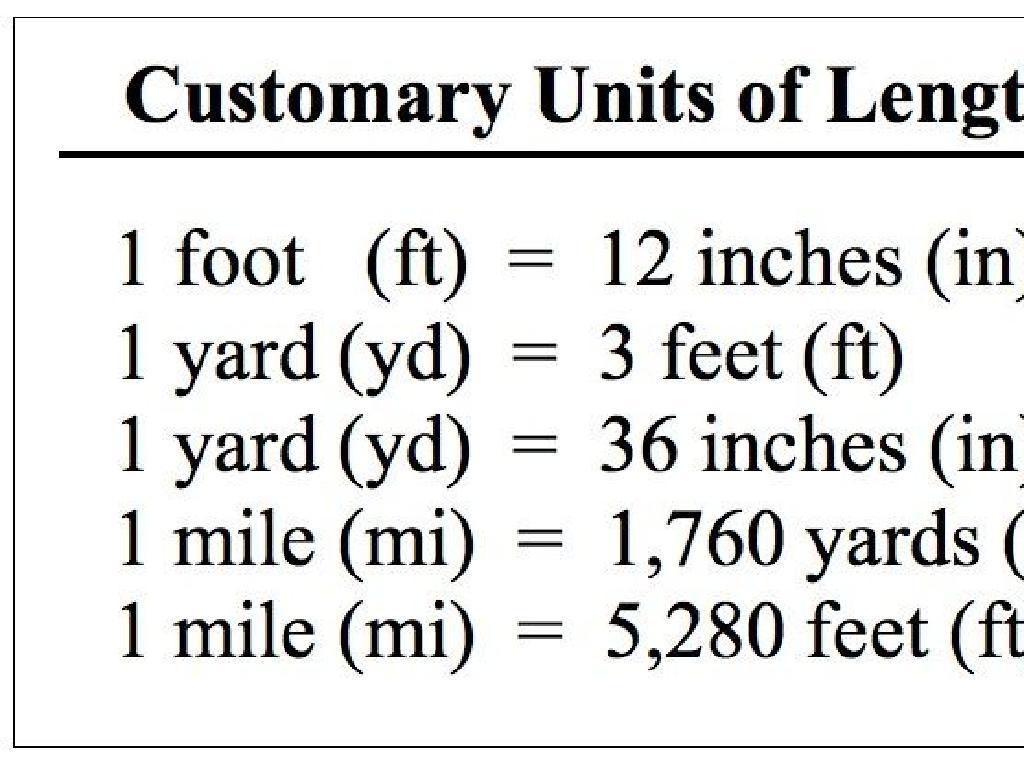Genes, Proteins, And Traits: Understanding The Genetic Code
Subject: Science
Grade: Eighth grade
Topic: Genes To Traits
Please LOG IN to download the presentation. Access is available to registered users only.
View More Content
Introduction to Genetics
– What is Genetics?
The study of heredity and the variation of inherited characteristics.
– Genes, DNA, and Chromosomes
Genes are DNA segments on chromosomes that determine traits.
– Traits and Genetic Influence
Traits are inherited features influenced by genes.
– Exploring Heredity
|
This slide introduces the fundamental concepts of genetics, which is the scientific study of heredity and genetic variation. Genetics plays a crucial role in determining the physical and behavioral traits of organisms. Genes, which are made up of DNA, are located on chromosomes and act as instructions to build proteins. These proteins, in turn, affect the traits of an organism. Understanding the relationship between genes, DNA, and chromosomes is essential for comprehending how traits are passed from parents to offspring. This knowledge forms the basis for exploring more complex topics in genetics, such as dominant and recessive traits, genetic disorders, and the impact of environmental factors on gene expression. Encourage students to think about traits they have inherited from their parents and how those traits might have been determined genetically.
Exploring the Genetic Code
– Genetic Code Defined
– A set of rules by which information encoded in genetic material is translated into proteins by living cells.
– DNA: The Blueprint of Life
– DNA stores all the genetic information necessary for the function of an organism.
– From Codes to Proteins
– Genetic codes are read by cells to synthesize proteins, which are crucial for various functions.
– Proteins and Traits Connection
– The proteins produced by genetic codes determine the physical traits of an organism.
|
This slide introduces the concept of the genetic code and its fundamental role in biology. The genetic code is the set of rules used by cells to translate information encoded in DNA into proteins, which are the workhorses of the cell, performing a variety of functions necessary for life. DNA acts as a blueprint, storing all the genetic instructions needed to build and maintain an organism. The process of translating genetic codes into proteins is essential for the expression of traits, which are the characteristics we can observe. Understanding this process is key to comprehending how genetic information is passed down and expressed in living organisms. Encourage students to think about how variations in DNA can lead to different traits, and discuss the importance of proteins in their daily lives.
Genes and Proteins: Expressing Traits
– DNA to proteins via transcription
– Transcription is copying DNA into mRNA
– Translation synthesizes proteins
– mRNA to amino acids, forming proteins
– Proteins’ role in trait expression
– Proteins determine characteristics like eye color
– Protein functions in our body
– Enzymes digest food, hemoglobin carries oxygen
|
This slide delves into the process by which genetic information is converted into functional proteins, which are crucial for trait expression. Transcription is the first step where DNA is transcribed into messenger RNA (mRNA). Translation follows, where the mRNA is read by ribosomes to synthesize proteins by assembling amino acids. Proteins play a vital role in determining an organism’s traits, such as physical appearance, by performing various functions within cells. Examples include enzymes that aid in digestion and hemoglobin that transports oxygen in the blood. Understanding these processes is key to grasping how genetic information is expressed as observable traits. Encourage students to think of proteins as workers in a factory, each with a specific job that affects the final product the trait.
Traits and Inheritance: Decoding Genetics
– Understanding trait inheritance
– Traits are passed from parents to offspring through genes.
– Dominant vs Recessive Traits
– Dominant traits overpower recessive ones and are more likely to be expressed.
– Predicting traits with Punnett squares
– A tool that shows how traits could be passed to the next generation.
– Examples of genetic inheritance
– Pea plants: Tall (Dominant) vs Short (Recessive), Eye color in humans.
|
This slide introduces the fundamental concepts of genetic inheritance. It’s crucial to explain that traits are inherited through genes, which are segments of DNA. Students should understand the difference between dominant and recessive traits, with dominant traits typically being the ones observed in the offspring when mixed with recessive traits. Punnett squares are a visual representation to help predict the probability of an offspring inheriting a particular trait. Provide examples such as Gregor Mendel’s pea plants, where tall plants were dominant over short, or human traits like eye color, where brown is often dominant over blue. Encourage students to think of traits in their family and how they might have been inherited.
Mutations and Genetic Diversity
– Defining mutations
– Permanent changes in DNA sequence
– Types and effects on proteins
– Substitution, insertion, deletion; can alter protein function
– Mutations’ role in diversity
– Genetic variation from mutations leads to diversity
– Evolutionary significance
– Mutations drive evolution by introducing new traits
|
This slide introduces the concept of mutations and their crucial role in genetic diversity and evolution. Mutations are permanent alterations in the DNA sequence that can occur spontaneously or due to environmental factors. There are various types of mutations, such as substitution, insertion, or deletion, each with potential impacts on protein synthesis and function. These genetic changes contribute to the diversity of traits within a population, providing the raw material for natural selection. Over time, beneficial mutations may become more common in the population, leading to evolutionary changes. Discuss examples like antibiotic resistance in bacteria or the diversity of dog breeds due to selective breeding. Encourage students to think about how mutations might affect an organism’s survival and reproduction.
Genetics in Our Lives
– Genetics in medicine
– Explore genetic disorders and the role of genetic testing
– Traits and behaviors
– How genes influence personal traits like eye color and behaviors
– Ethical considerations
– Discuss the moral implications of genetic research and privacy concerns
– Genetic testing impact
– Understanding how testing can predict and prevent diseases
|
This slide aims to discuss the pervasive role of genetics in various aspects of our lives, particularly in medicine, personal traits, behaviors, and ethics. Genetics in medicine includes understanding genetic disorders and the importance of genetic testing in predicting and managing health conditions. Students should learn how genetics contribute to their personal traits, such as height and eye color, as well as certain behaviors. Ethical considerations are crucial when discussing genetics, as students should be aware of the moral questions surrounding genetic data use, privacy, and discrimination. The impact of genetic testing on society, including its potential to prevent diseases, should also be highlighted. Encourage students to think critically about these topics and consider the implications of genetic advancements on their own lives.
Class Activity: Strawberry DNA Extraction
– Gather materials for extraction
– Follow extraction steps closely
Mash strawberries, mix with soap and salt, filter, add alcohol
– Observe the DNA strands
Look for the long, stringy strands that form
– Comprehend DNA’s significance
Seeing DNA helps understand its role in genetics
|
This hands-on activity is designed to give students a visual and tangible understanding of DNA. By extracting DNA from strawberries, students can see the physical representation of genetic material. The materials needed are simple household items, making the experiment easily accessible. The process involves mashing strawberries to break down cell walls, mixing with soap and salt to dissolve cell membranes and proteins, filtering to remove solids, and adding alcohol to precipitate the DNA. It’s crucial to emphasize the importance of each step and how it contributes to the final result. After the activity, discuss with students how DNA is the blueprint of life and is found in all living organisms. Encourage them to share their observations and thoughts on why understanding DNA is essential in genetics.






